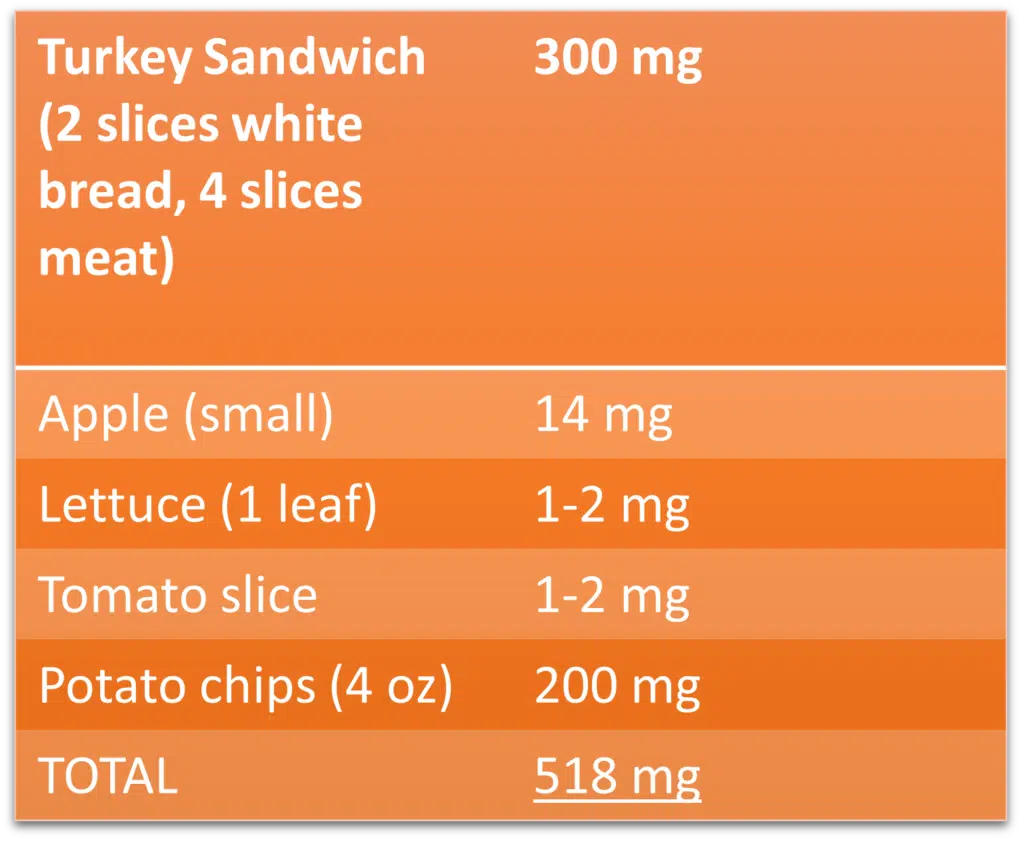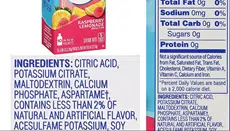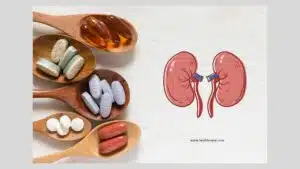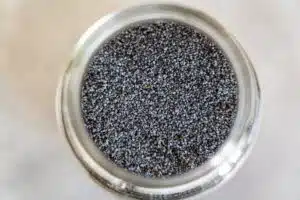High phosphorus (hyperphosphatemia) in kidney disease patients, why are renal dietitians obsessed with controlling Phosphorus? Well, there are plenty of reasons, but I will try to narrow it down to just three. Also, check out this blog, for foods high in phosphorus and information related to a phosphate binder or a phosphorus binder for kidney patients.
1. Not all phosphate binder (phosphorus binder) is created equal
Firstly, what is a phosphate binder or a phosphorus binder? Phosphate binder is a medicine used to decrease the absorption of dietary phosphate. A phosphorus binder is also known as a phosphate binder.
The average-sized meal contains anywhere between 300 and 500 mg of Phosphorus. This amount could be higher if it is from a restaurant due to Phosphate additives. In fact, that amount could go up to 1500 mg or higher in one fast food meal.
Example: Average American lunch

Foods High in Phosphorus
Phosphorus is highest in meat, fish, cheese and milk products, beans/seeds, and many soft drinks. Phosphates are also used widely as preservatives in many foods. Renal dietitians play a crucial role in advising their patients with Chronic Kidney Disease (CKD) on what to avoid and appropriate replacement foods for those that may have a high amount of Phosphates.
Companies are not required to report Phosphates on their food labels, so knowing what to look out for can be tricky. Many powdered drinks can contain Phosphates which may or may not be reported.

The diet of most Americans and Westernized society has shifted towards large quantities of meat and cheese as well as other foods that contain a high amount of preservatives. The typical adult hamburger is now about 3 times the size of what it was 20 years ago. This is 3X the Phosphorus, not to mention the cholesterol which may also contribute to cardiovascular disease risk. It is no surprise that Phosphorus levels in restaurant foods have increased exponentially along with portion sizes.
It is no surprise that Phosphorus levels in restaurant foods have increased exponentially along with portion sizes over the past 20 years.
For example, a 20 oz milkshake can contain up to 600 mg of Phosphorus. When you add an adult-sized burger (300 mg), one slice of cheese (150 mg), large fries (200 mg), and a soda, this could easily tip the scales past 1000 mg of Phosphorus in one meal.
The 2015–2016 National Health and Nutrition Examination Survey (NHANES) showed that children and teens aged 2–19 years had an average daily phosphorus intake of 1,237 mg. In adults aged 20 and older, the average daily phosphorus intake was 1,189 mg for women and 1,596 mg for men. These numbers are around twice the recommended daily allowance for Phosphorus for those without any kidney disease or disorder.
There is no significant evidence that a person without kidney disease will have any adverse health effects from excessive Phosphorus intake. Indeed, the tolerable upper limit for dietary Phosphorus is 4000 mg/day for persons aged 9 through 70. There is, however, strong evidence linking high Phosphorus levels with cardiovascular and bone disease among those with CKD.
Phosphate Binder Pills
There are several Phosphate binder pills available to people living with CKD. These phosphate-binding pills all work in different ways. Different phosphorus or phosphate binders carry different binding strengths. It is important to note that the milligrams for each phosphorus or phosphate binder pill do not correspond with the strength of the phosphate binders. Therefore, phosphorus or phosphate binders made by different manufacturers cannot be compared based on the milligrams (mg) per pill. Unfortunately, the most accessible phosphate binder does not bind as much Phosphorus as others (See the comparison chart below).
Unfortunately, the most accessible phosphate binder does not bind as much Phosphorus as others.
For example:
8 Renvela = 4 Calcium Acetate = 1 (1000 mg) Fosrenol = 1.5 Auryxia = 1 Velphoro
Approximate Binding Capacity of Phosphorus Or Phosphate Binder
PHOSPHATE BINDER /DOSE (mg) |
PHOSPHORUS BINDING CAPACITY (mg)
|
Calcium Acetate/Phoslo phosphate binder 667mg | 30mg/tab |
Phoslyra phosphate binder 667mg/5ml | 30mg/5ml |
Renagel phosphate binder 400mg Renagel phosphate binder 800mg | 8mg/400mg tab 17mg/800mg tab |
Renvela phosphate binder 800mg | 17mg/tab/packet |
Tums phosphate binder 500mg Tums phosphate binder 750mg Tums phosphate binder 1000mg | 20mg/500mg tab 29mg/750mg tab 39mg/1000mg tab |
Fosrenol phosphate binder 500mg Fosrenol phosphate binder 750mg Fosrenol phosphate binder 1000mg | 68mg/500mg tab 101mg/750mg tab 130mg/1000mg tab |
Velphoro phosphate binder 500mg | 130mg/tab |
Auryxia phosphate binder 210mg | 85-88mg/tab |
For this reason, it is important to know what the best phosphorus binder (or combination of binders) is for you. Working with your dietitian on how to best eliminate extra Phosphorus in your diet will help lower your Phosphorus level. Your dietitian and/or social worker can also help you obtain the best phosphate binder for you.
2. Hyperphosphatemia is the #1 cause of micro-calcifications leading to blood clots
It is a myth that only a small number of patients on dialysis will end with calcifications if they have high Phosphorus. Carrying high levels of serum Phosphorus creates calcifications in the vessels which can lead to heart attack, stroke, amputations, blindness, and clotted access. In some rare cases, calcifications can cause skin ulcers leading to skin infections.
There are other possible contributors to clotting including high blood sugar levels, hypertension, high cholesterol, smoking, inactivity, and low blood rate flow through the access. Your dietitian and physician can best help you identify these factors and how to limit their impact on your health.
3. High Phosphorus can lead to loss of bone mass
Carrying high levels of Phosphorus will cause higher circulating levels of parathyroid hormone. Hyperparathyroid disease can cause early osteoporosis by releasing calcium from the bones. Other possible adverse effects include kidney stones, fatigue, bone and joint pain, nausea, vomiting, and loss of appetite. Your dietitian can help with therapies to best avoid these adverse effects.
Conclusion
If you are living with chronic kidney disease (CKD) or have a family member living with this disease, please consult with your doctor and dietitian on the best way to control your Phosphorus level. Any renal dietitian will tell you that the #1 way to reduce serum Phosphorus levels is to cook most of your meals from scratch while avoiding known high Phosphorus foods. The renal dietitian can help you with meal planning as well as selecting the phosphorus or phosphate binder that works best for you and your body.
References
- https:// scholars.northwestern.edu/en/publications/elevated-fibroblast-growth-factor-23-is-a-risk-factor-for-kidney-
- ncbi.nlm.nih.gov/pmc/articles/PMC8149241/
- https://od.nih.gov/factsheets/Phosphorus-Consumer/
- https://kidneychef.com/phosphate-binders/

Cheryl Robinson
Related Posts

Peritoneal Dialysis Complications – Is Peritoneal Dialysis For Me?

Renal Dietitian Answers Real Questions Of Dialysis Patients





